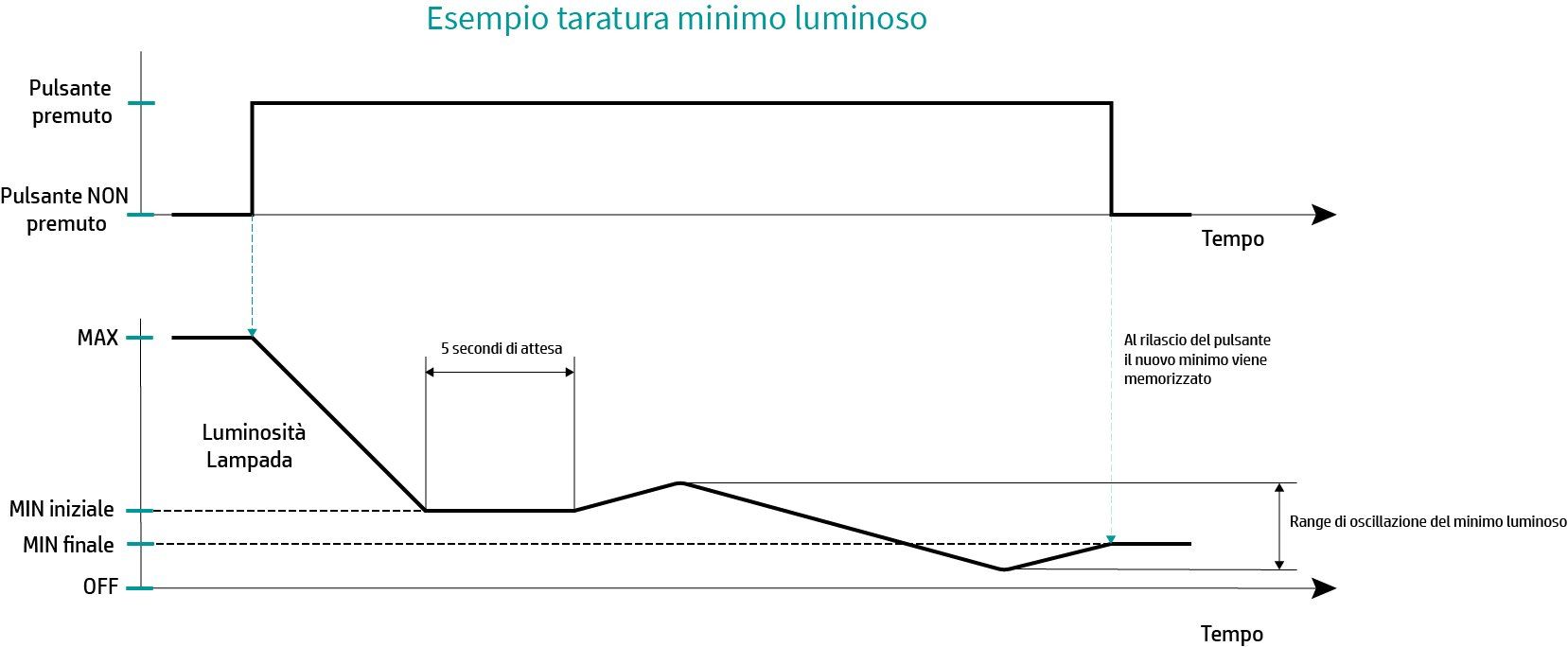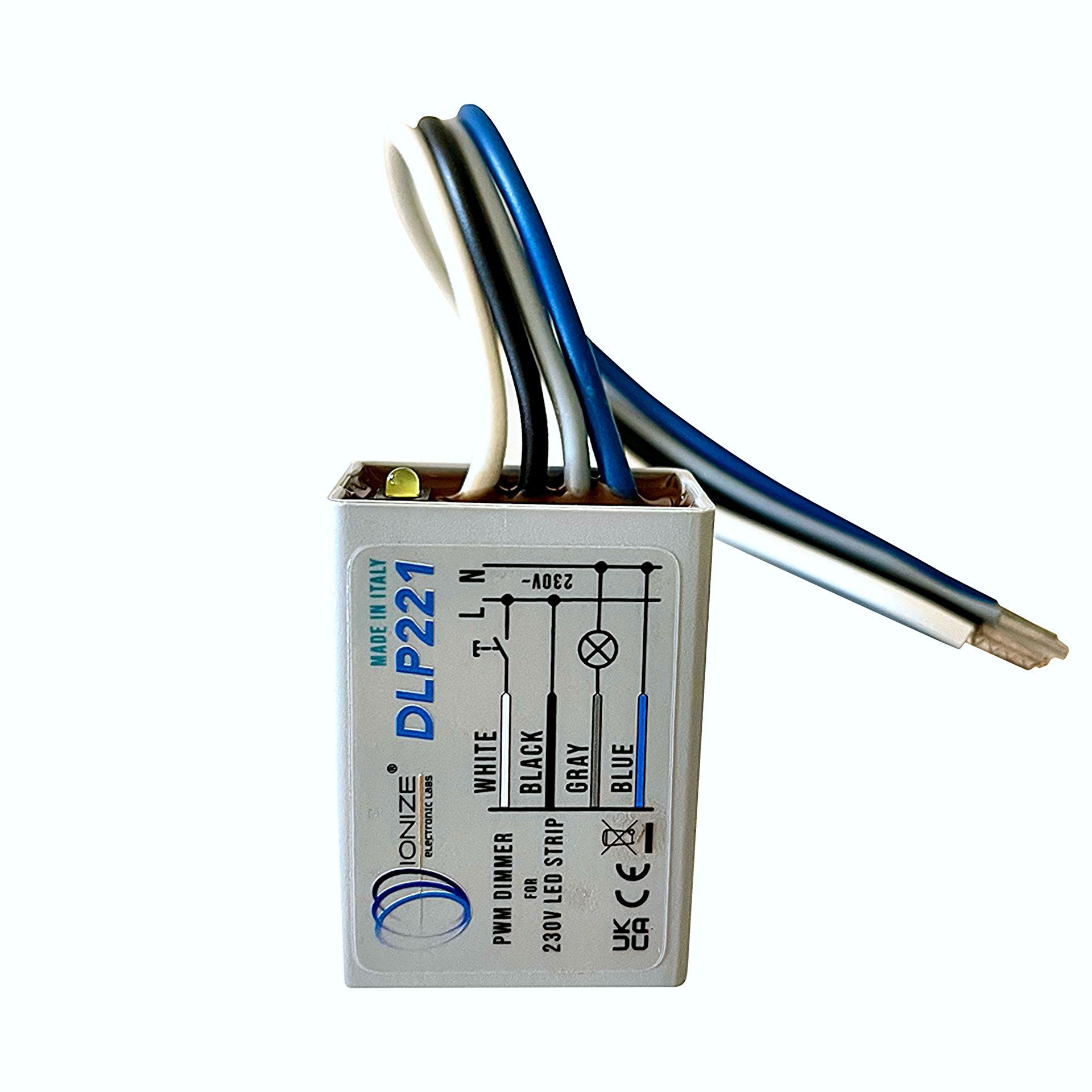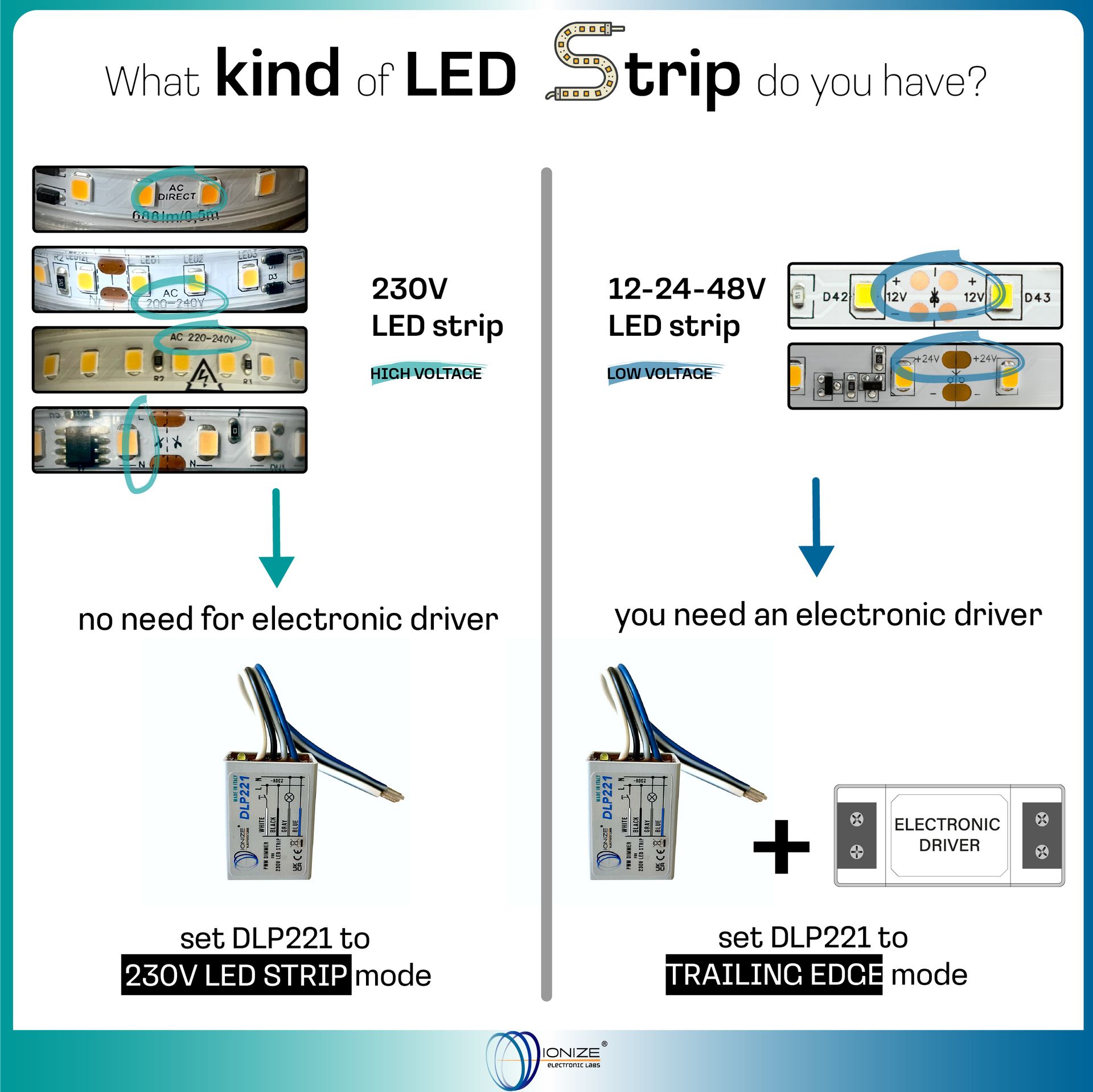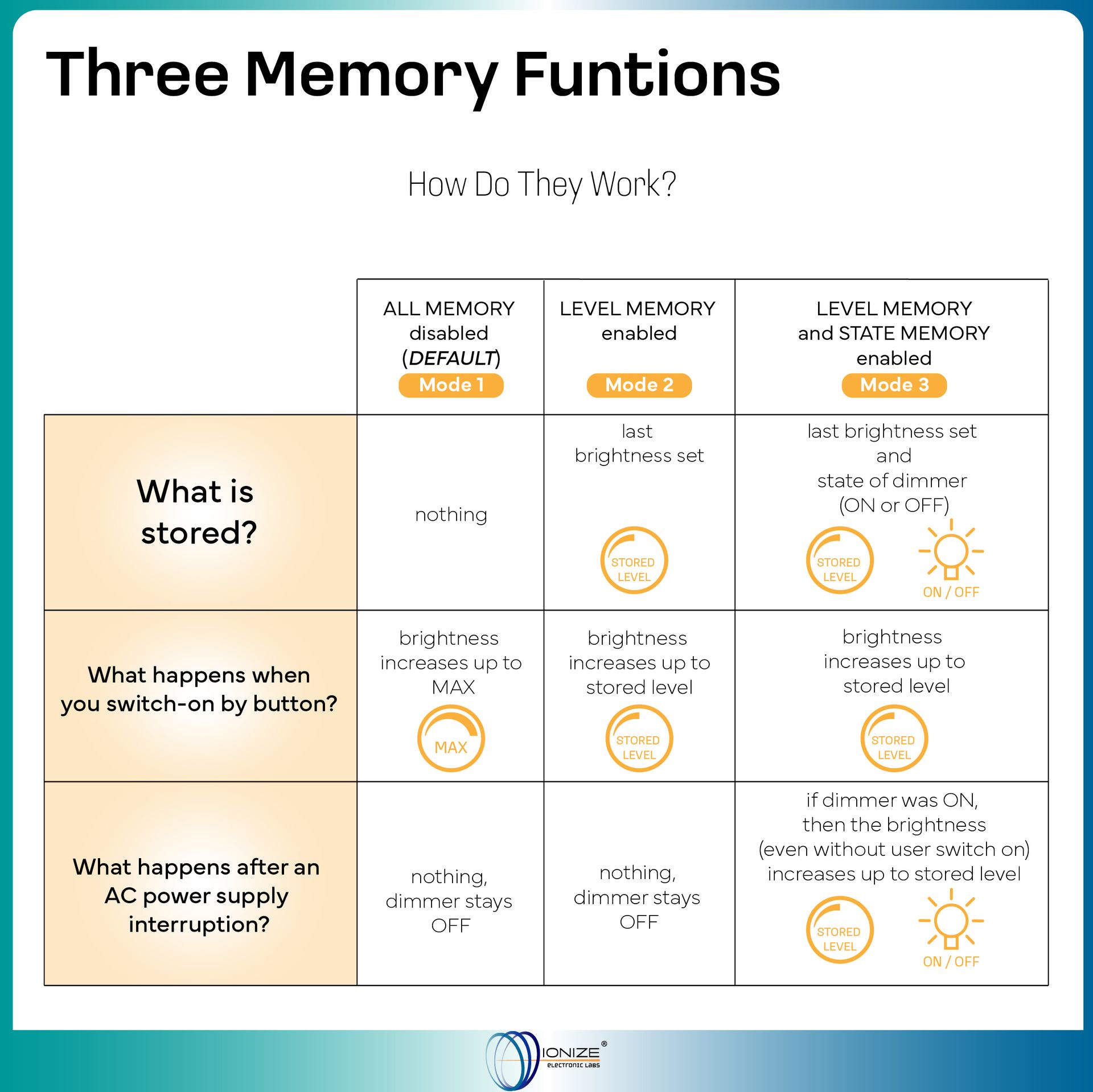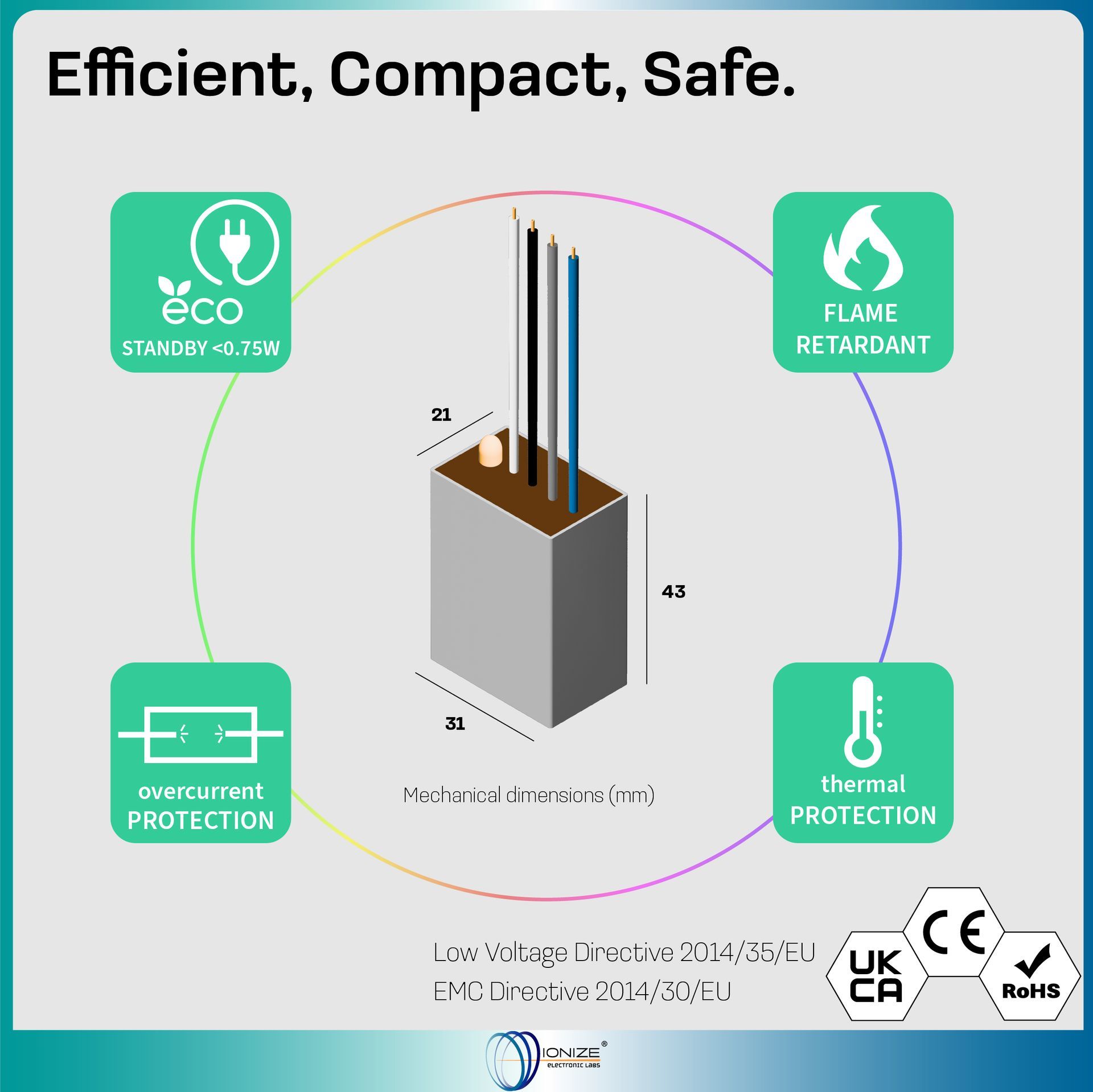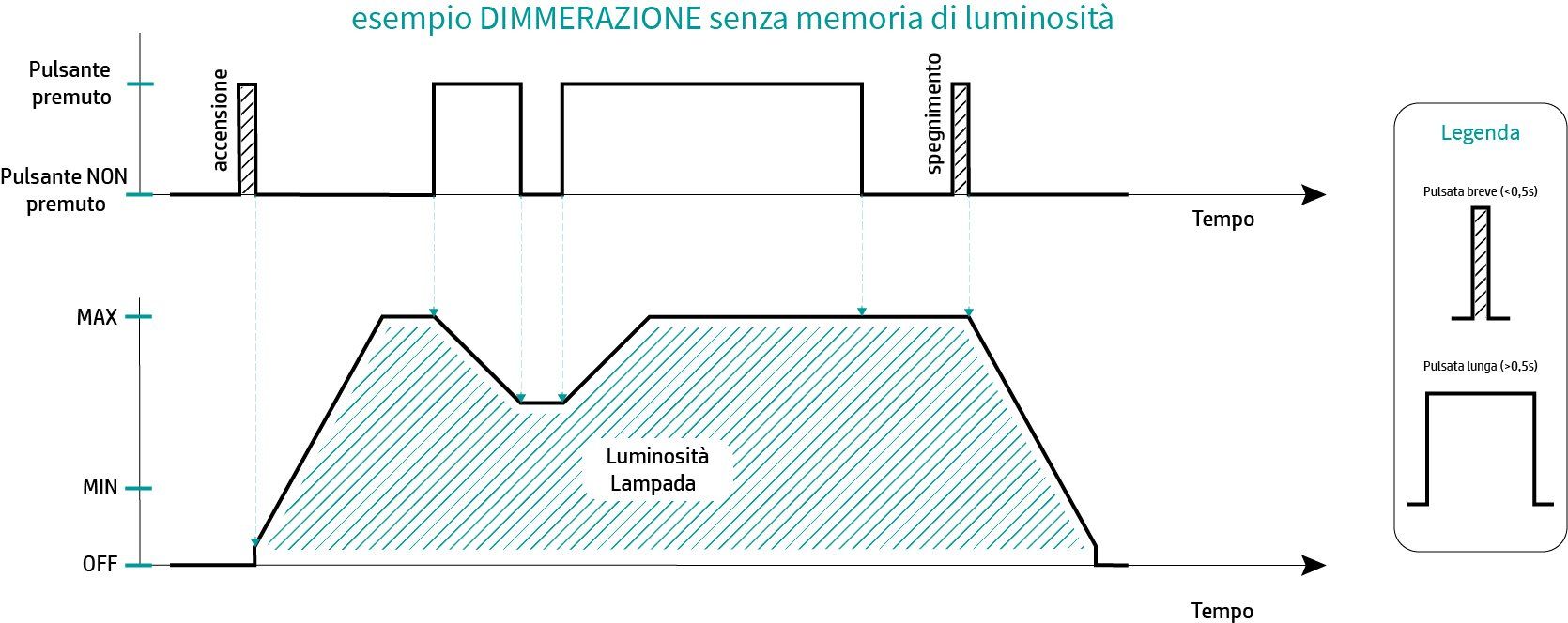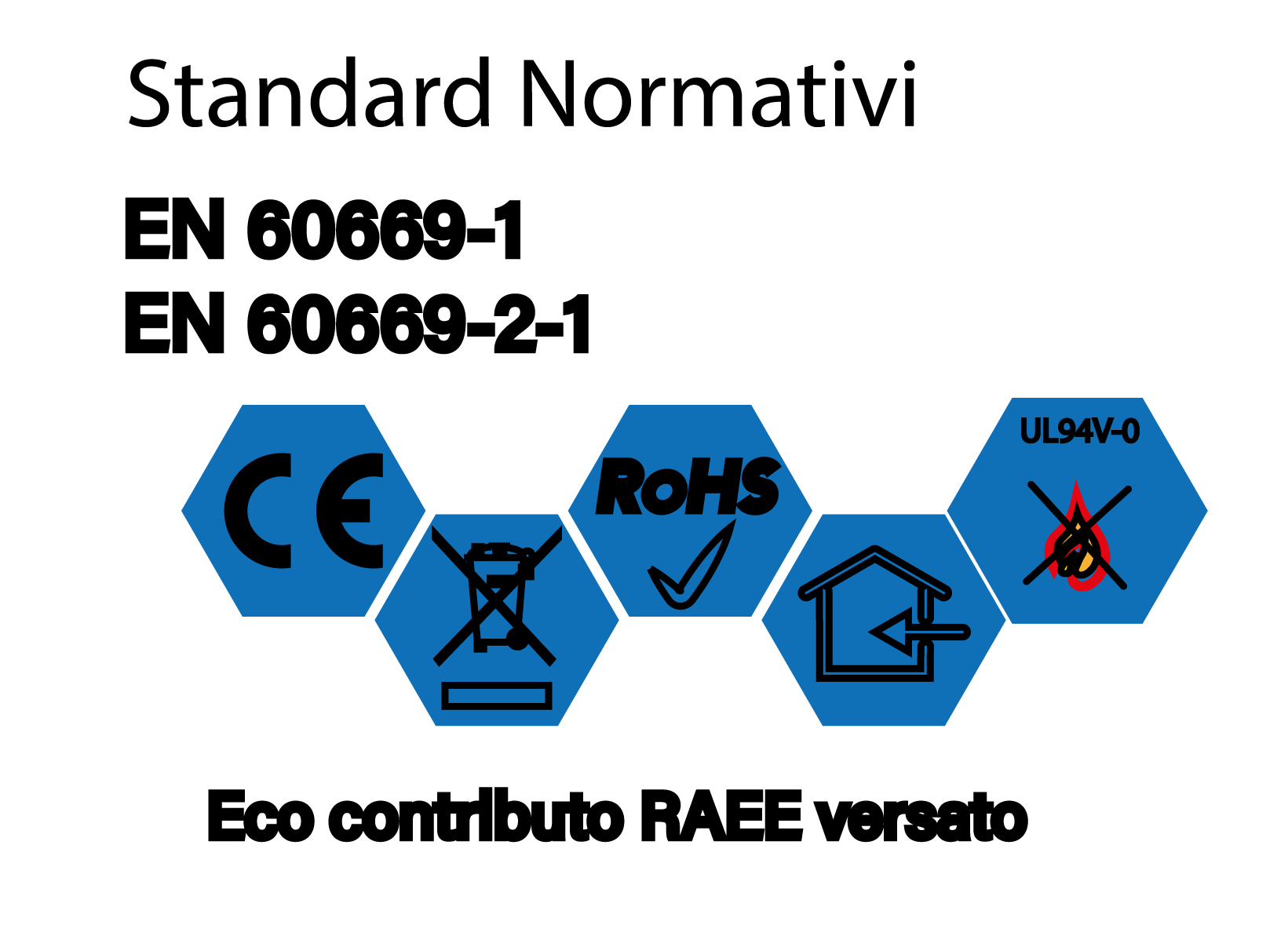DLP221
DLP221: Dimmer optimized for 230V LED Strips
The DLP221 is an advanced electronic dimmer, based on MOSFET technology, specifically designed to overcome the flickering issues typical of 230V LED strips when used with traditional phase-cut dimmers. These strips, equipped with a basic power circuit, suffer from current instability at each half-wave, causing low or high frequency flickering.
The solution implemented in the DLP221 uses the PWM (Pulse Width Modulation) technique.
This mode, called "230V LED Strip", generates frequent, short pulses of current, distributing light energy more evenly over time, making the fluctuations imperceptible to the human eye. In addition, the steep voltage edges of the PWM pulses improve the brightness adjustment accuracy of LED strips.
The DLP221 stands out for its versatility. In addition to the PWM mode optimized for 230V LED strips, it also integrates the "Trailing Edge" phase cut dimming mode. This function allows you to effectively control other types of loads, such as traditional LED lamps and electronic transformers, for which PWM dimming would not be appropriate.
The installation and use of the DLP221 are simple. It is powered by the standard phase and neutral connection (230Vac) and can be controlled by one or more normally open buttons, also with indicator light, connectable to both the phase and neutral. This wiring flexibility facilitates integration into different system contexts.
On the DLP221 you can select the dimming mode, the memory mode (3 possible options) and the minimum dimming level. These configurations can be done conveniently by button; there is no need to open the dimmer housing box.
Safety and durability are key aspects of the DLP221. The device is sealed in a casing made of high-quality materials: PBT and self-extinguishing polyurethane resin with UL94 V-0 classification. This construction choice gives the dimmer excellent flame retardant properties, ensuring a high level of operational safety.
In summary, the DLP221 represents a cutting-edge solution for dimming, especially for 230V LED strips, offering stable and flicker-free lighting thanks to its PWM technology. Its dual operating mode and safety features make it a reliable and versatile choice for various lighting applications.
Available now
Technical features
- Power supply: 230 Vac 50 Hz
- Operating temperature: -5 to 35 °C
- Linear light dimming
- Minimum light calibration from button
- Level memory and On/Off status
- Designed primarily as a dimmer for 230V LED STRIPS
- Can be used as a universal dimmer in trailing edge mode
- Controlled from multiple points
- Three memory functions. Minimum light calibration. These selections can be made by button, without having to physically access the dimmer.
- Overcurrent and overload protection
How the dimmer works
Default operation (without memory)
The first diagram refers to the duration of the pulse (with time on the x-axis).
The narrower, lined rectangles indicate a short pulse, the wider ones indicate a longer pulse.
The diagram below refers to the brightness of the lamp (brightness on the y-axis and time on the x-axis).
For each short pulse, the brightness always switches from the minimum to the maximum level and vice versa, without stopping at intermediate levels.
The first long press on the graph sets the brightness from the maximum level to the desired intermediate level.
The second button "changes the direction of dimming" and in this case increases the brightness back to the maximum level.
Memory operation
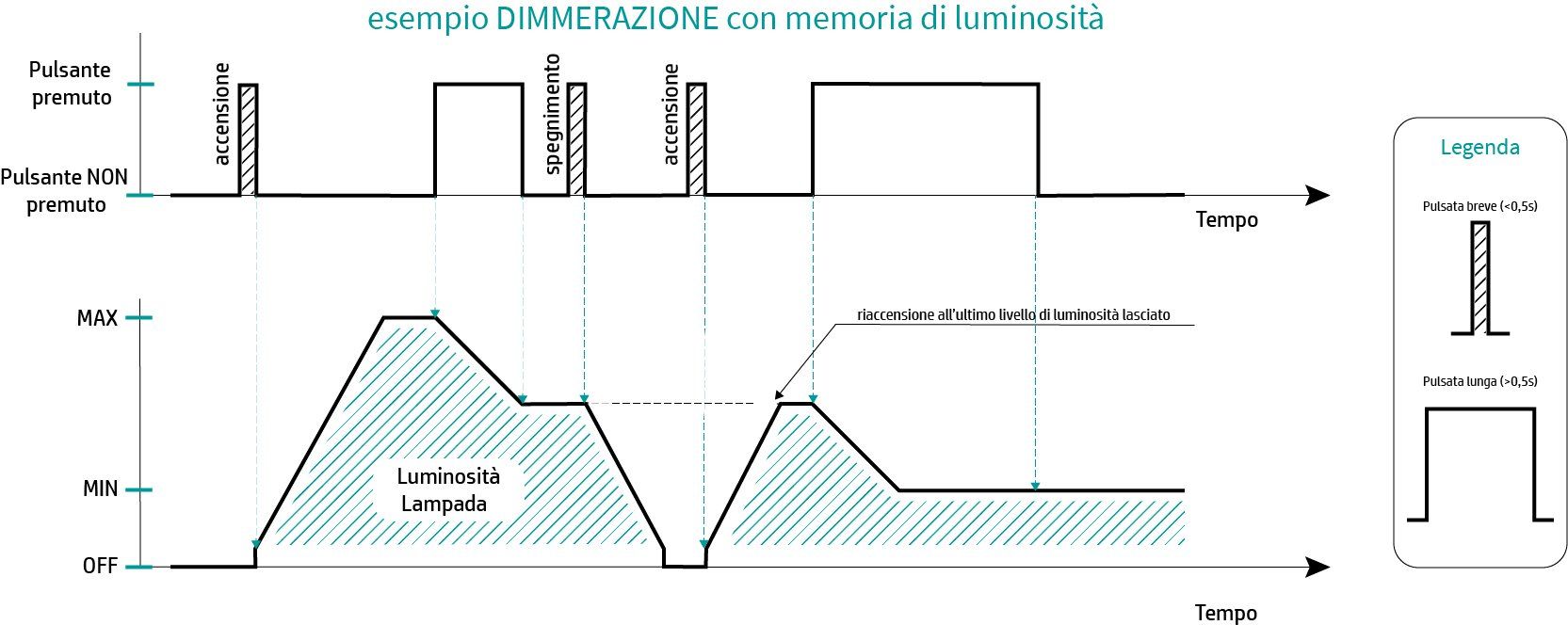
After a short press of the button, the light turns on at the maximum level.
The user then presses a long button, thus dimming the light and releasing the button at the desired brightness level.
This level is consequently the stored level.
Another short press by the user turns the light off, while the next one turns it back on at the last selected brightness level (memory function).
Idle calibration
DLP221 allows you to calibrate the minimum brightness directly from the button.
Each type of lamp may require a different minimum brightness, this can also be useful to avoid "flickering" problems.
To calibrate the minimum light, you need to press and hold until the light drops to the current minimum.
Once the brightness has reached the minimum you need to continue holding the button down for another 5" or so.
At this point the brightness should start to "oscillate" (between 0 and 30%).
To set the new minimum simply release the button at the desired brightness level.
